Light, airy, and irresistibly soft, Pan di Spagna is the secret to elegant desserts, ideal for layering with cream, fruit, or custard for an authentic homemade patisserie feel.
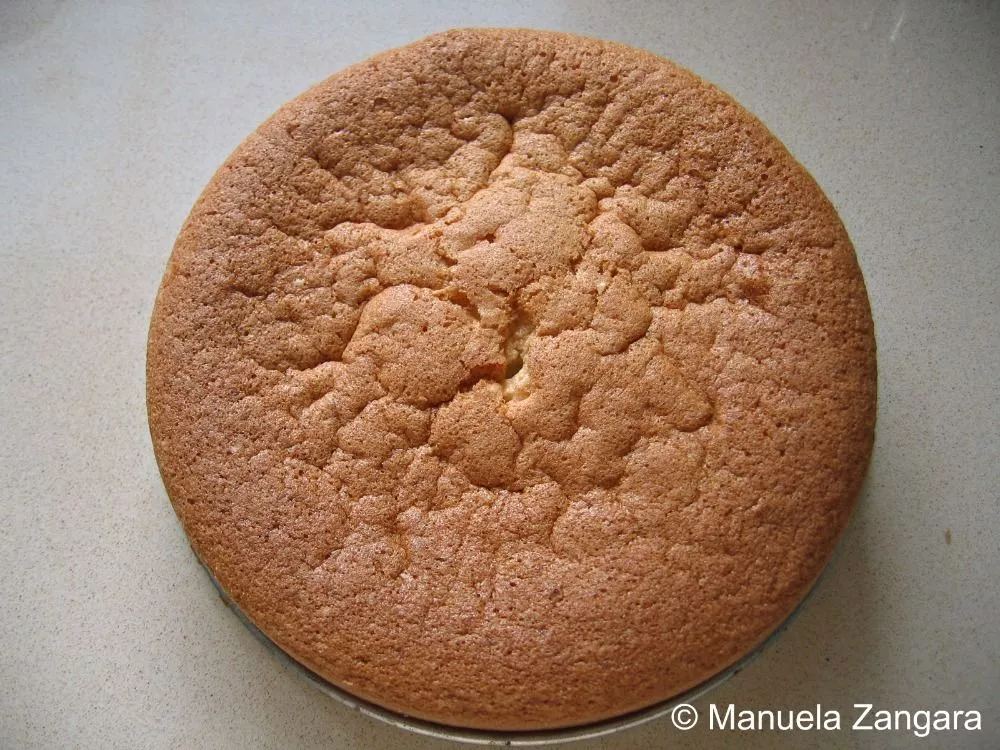
Pan di Spagna is one of the most common and versatile cakes you’ll find in Italian pasticcerie. Light, soft, and made without any added fat, it’s the perfect base for countless desserts, from Cassatine Siciliane to layered celebration cakes.
This recipe has been in my family for generations. It was often baked on weekends and used for the sweets we shared with friends and family. Once you learn how to make a good Pan di Spagna, you’ll always have a dependable base for many Italian desserts.
Why We Love This Italian Sponge Cake
- Ingredients are simple, affordable, and usually found in any home kitchen.
- Adapts easily to trifles, layered cakes, or festive sweets with different fillings.
- Golden top and gentle aroma give a classic look straight from an Italian bakery.
Key Ingredients for Pan di Spagna
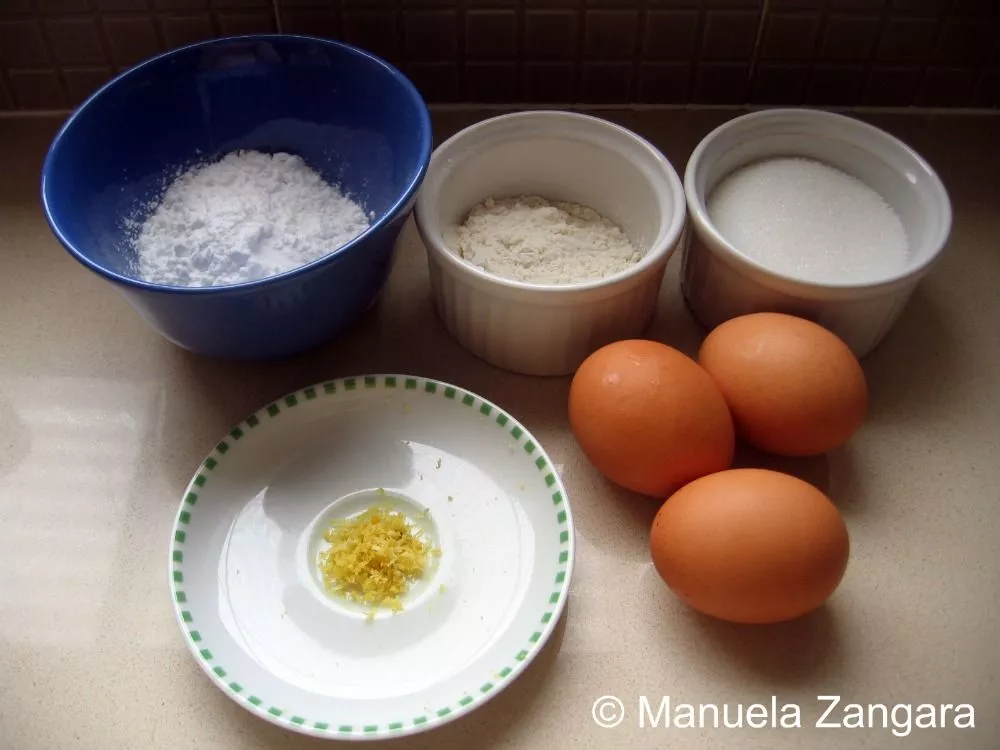
Eggs
They provide all the lift and structure, as traditional Pan di Spagna contains no baking powder. Well-whipped eggs give the sponge its soft, airy texture.
Sugar
Adds sweetness and stability when beaten with the yolks. It helps trap air and gives the cake a fine, even crumb.
Flour
The mix of plain and potato flour creates a soft yet stable sponge. Plain flour gives structure and shape, while potato flour keeps the crumb tender, light, and easy to slice for layered desserts.
Lemon Zest
Finely grated zest adds fragrance and freshness that balance the sweetness. It’s a common flavour in Italian cakes and brings a gentle brightness to the sponge.
Find the complete list with measurements in the recipe card below.
How to Make Pan di Spagna
Step 1: Using a hand mixer, beat the egg whites until stiff peaks form. Set aside.
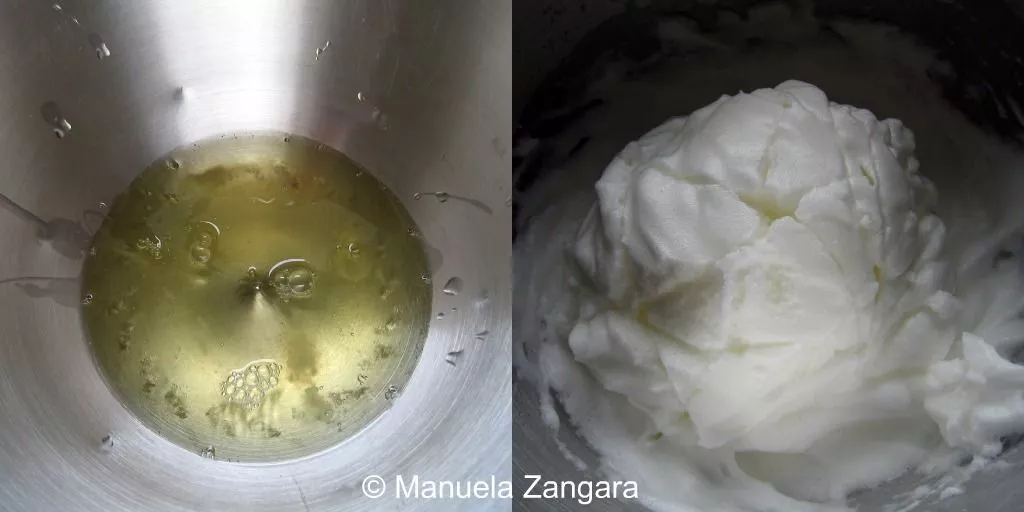
Step 2: In a separate bowl, beat the egg yolks and sugar until pale and fluffy.
Step 3: Bring a pot of water to a boil. Once boiling, remove it from the heat and place the bowl with the whipped yolks on top. It should sit over the steam but not touch the water, like a double boiler.
Step 4: Gradually add the flour, potato flour, and lemon zest, whisking continuously until smooth and fully combined.
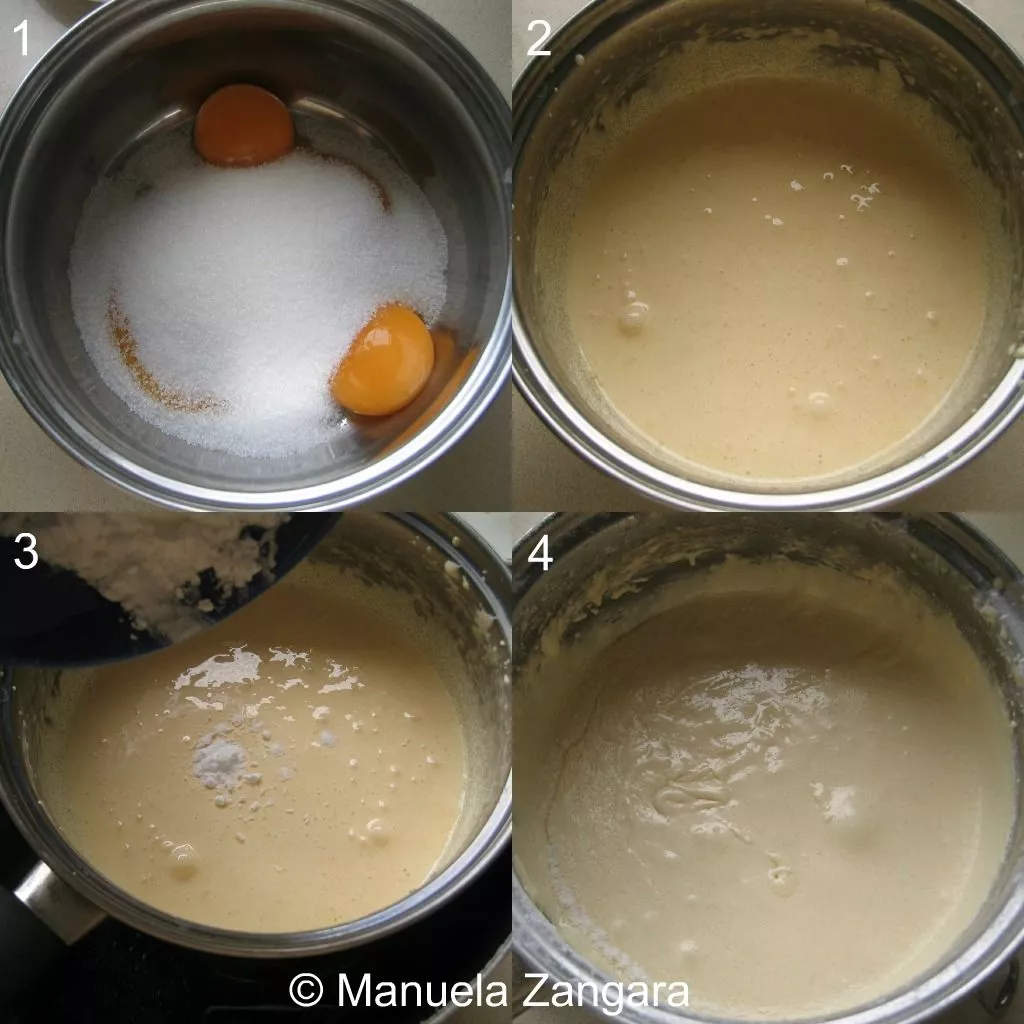
Step 5: Gently fold the beaten egg whites into the yolk mixture using a spatula, keeping as much air as possible in the batter.
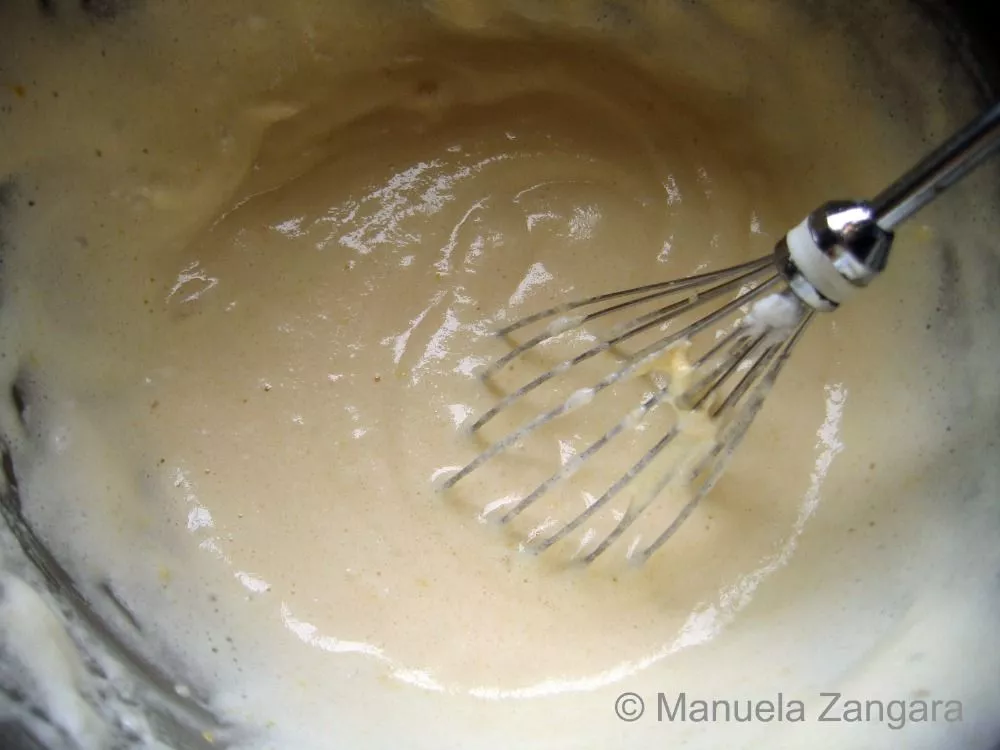
Step 6: Grease a springform pan and dust it lightly with flour. Pour the batter into the prepared pan and smooth the top.
Step 7: Bake in a preheated oven at 190°C – 375°F for 30 to 35 minutes, or until a toothpick inserted in the centre comes out clean.
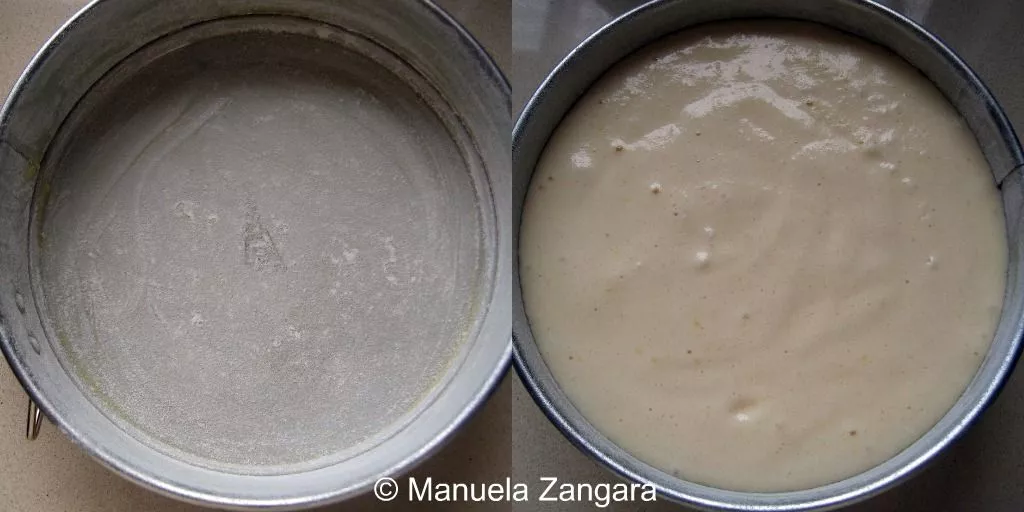
Step 8: Allow the cake to cool completely before unmoulding. Once cold, slice it horizontally and fill with jams or creams, or use it as a base for trifles and other desserts.
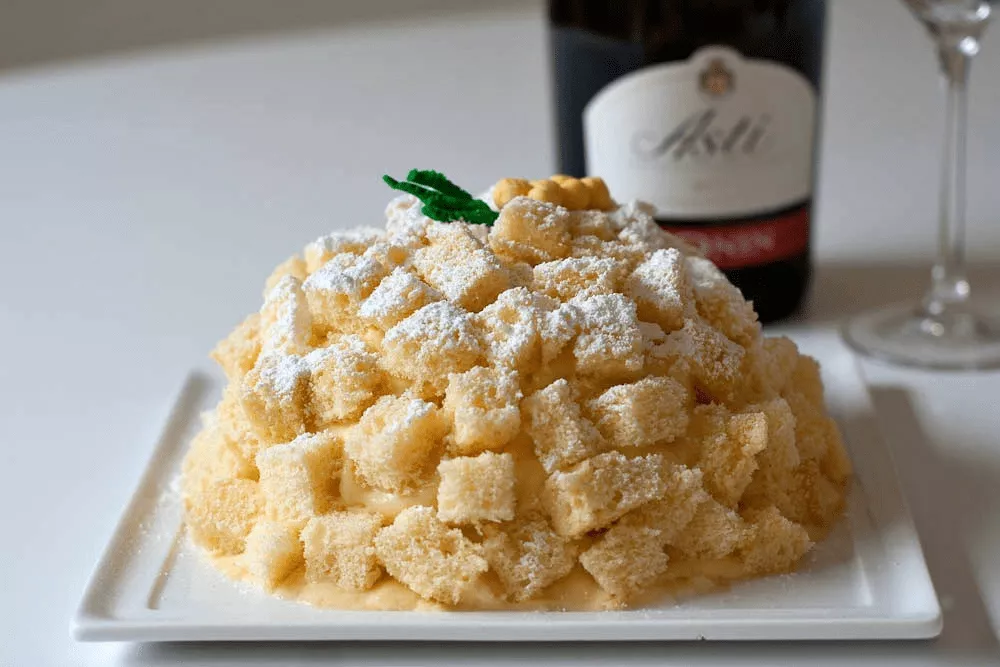
Frequently Asked Questions
The key is in how you whip and fold the eggs. Beat them until they’re pale and tripled in volume, as this air gives the cake its rise. Pan di Spagna often fails to rise when the eggs are under-whipped or the batter is mixed too vigorously, which releases trapped air. Fold gently with a spatula to keep the mixture light.
Traditional Pan di Spagna relies entirely on whipped eggs for lift. You can add ½ teaspoon of baking powder if you’re a beginner, but the texture will be slightly different from the classic version.
Keep the oven closed until the sponge has set, and let it cool gradually. Pan di Spagna can start deflating if it’s exposed to sudden temperature changes or if the oven door is opened too early.
Yes. You can replace the potato flour with the same amount of cornflour or cake flour. The sponge will be a bit firmer but still light.
Extra Help from the Kitchen
Separate the Eggs Carefully – Make sure no yolk mixes with the whites. Even a trace of fat can stop them from forming stiff peaks. Use clean, dry bowls and crack each egg into a small dish before adding it to the main bowl.
Beat the Yolks Thoroughly – Take time to whip the yolks and sugar until pale and thick. This is what gives the sponge its structure and fine crumb. If you lift the whisk, the mixture should fall in slow ribbons.
Sift the Flours Twice – Sifting removes lumps and makes the mixture easier to incorporate without deflating the eggs. It also helps the sponge bake evenly with a smooth texture.
Line the Tin Base – Place a round of baking paper at the bottom of the tin. It prevents the sponge from sticking and helps you unmould it cleanly once it cools.
Bake Immediately – The batter should go straight into the oven after mixing. Waiting too long will cause the air to escape, and the sponge won’t rise properly.
Variations and Twists
Chocolate Pan di Spagna – Replace some of the potato flour with unsweetened cocoa powder to create a light chocolate base that pairs well with coffee or cream fillings.
Citrus-Free Version – Omit the lemon zest entirely if you prefer a plain sponge. The flavour remains delicate and works well with any filling.
Vanilla Pan di Spagna – Add ½ teaspoon of vanilla extract to the yolk mixture for a simple, fragrant variation that works with any dessert.
Layered Celebration Cake – Slice the sponge into layers and fill it with pastry cream, jam, or whipped ricotta. It makes a perfect base for birthday or festive cakes.
Storage and Shelf Life
Store Pan di Spagna at room temperature for up to 3 days. Wrap it well in cling film or place it in an airtight container to keep it from drying out.
For longer storage, freeze the sponge whole or in layers for up to 2 months. When ready to use, thaw it completely at room temperature before filling or decorating. The texture remains soft and easy to slice, even after freezing.
Perfect Desserts to Make with Pan di Spagna

Pan di Spagna Recipe
Light, airy, and irresistibly soft, Pan di Spagna is the secret to elegant desserts, ideal for layering with cream, fruit, or custard for an authentic homemade patisserie feel.
Ingredients
- 50 g – 1.7 oz potato flour
- 20 g – 0.7 oz plain flour
- 90 g – 3.2 oz sugar
- 3 eggs – separated
- ½ lemon zest – grated
Instructions
-
Using a hand mixer, beat the egg whites until stiff peaks form. Set aside.
-
In a separate bowl, beat the egg yolks and sugar until pale and fluffy.
-
Bring a pot of water to a boil. Once boiling, remove it from the heat and place the bowl with the whipped yolks on top. It should sit over the steam but not touch the water, like a double boiler.
-
Gradually add the flour, potato flour, and lemon zest, whisking continuously until smooth and fully combined.
-
Gently fold the beaten egg whites into the yolk mixture using a spatula, keeping as much air as possible in the batter.
-
Grease a springform pan and dust it lightly with flour. Pour the batter into the prepared pan and smooth the top.
-
Bake in a preheated oven at 190°C – 375°F for 30 to 35 minutes, or until a toothpick inserted in the centre comes out clean.
-
Allow the cake to cool completely before unmoulding. Once cold, slice it horizontally and fill with jams or creams, or use it as a base for trifles and other desserts.




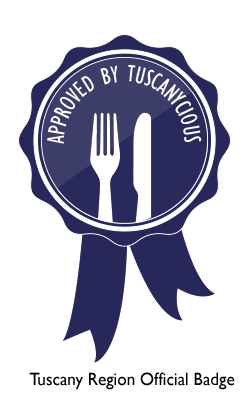
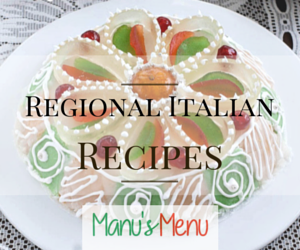

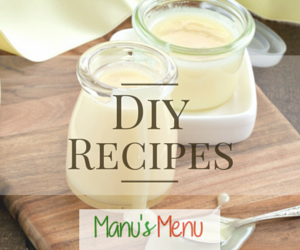
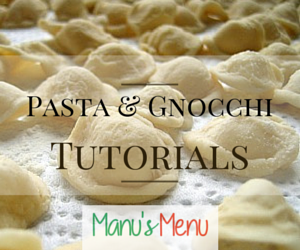

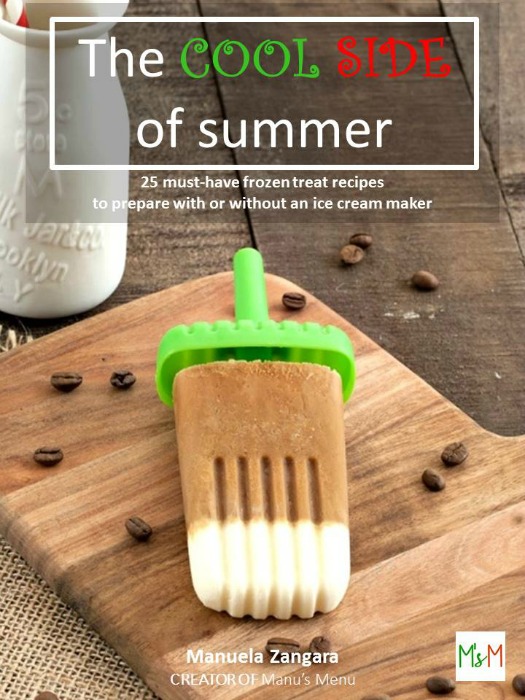






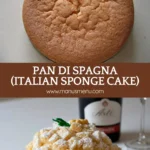
Leave a Reply